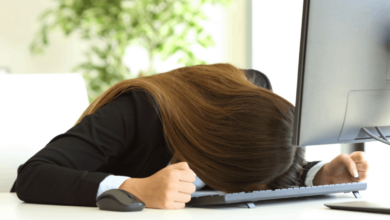Improvements to the iPhone Camera Will Shape Photography Forever. Here’s why.

We benefit every time the smartphone in your pocket improves its camera system. Professional or not, we have to admit that the quality of the software that generates the images on our smartphone is superb. All this smart technology will have a huge impact on future photography. Here’s why.
Leap
No doubt all cameras have improved by leaps and bounds over the last 10 years, but even more so for the cameras we carry around every day in our pockets. Smartphone camera improvements may seem like upgrades for ordinary people. However, I believe they will also shape the future of professional photography.
Today’s flagship phone cameras are so good that the average viewer won’t think again that good shots don’t come from a professional camera. Smartphone cameras are taking a different path from traditional photography cameras, and I see them as the future for both casual and professional photographers.
Artificial intelligence era
It’s naive to think that smart camera software like the “Photonic Engine” found in the latest iPhone 14 Pro won’t find its way into professional cameras. We are entering an era where AI will play a more prominent role in every industry, including the arts. If used properly, this can open up amazing new possibilities for all artists, especially photographers. Whether you like the idea or not, it’s definitely the direction we’re headed.
Why should camera manufacturers care?
I feel as though the pace of implementing new software technology on smartphones is much faster than with dedicated cameras. This pace of innovation can be attributed to limitations found with smaller sensor sizes on most smartphones. This forces manufacturers to find creative ways to improve their images. However, I believe that it won’t be long before the camera manufacturers will have to enhance it as well. Despite the slower implementation, a large amount of intelligent software has found its way into professional cameras. Adding more software will make it easier to take better photos, especially for beginners. It can act as a way for beginners to find their niche or take the leap to professional camera use, leading to increased sales for camera manufacturers. And at the end of the day, that will be their main goal.
Smart technology
AI and intelligent software are playing a more important role in our modern cameras than you might realize. For example, the latest generation of iPhones is taking multiple exposures, using a depth sensor, and performing deep image processing when you press the shutter button. Thanks to the latest computer chips, this happens in real time, so fast you wouldn’t even think. This technology allows smaller camera sensors, such as those on smartphones, to produce images you might expect from a dedicated camera. Improved dynamic range, higher quality images from existing sensors, and incredible performance in low light are some of the notable fundamental improvements. Imagine the possibilities that can be unlocked when you put that software genius into a pro camera.
Smart camera
Artificial intelligence, in one form or another, is already present in most modern camera bodies. The improvements we’ve seen in autofocus and tracking are all thanks to industry-leading facial recognition and subject tracking software. Technology like this makes creating more enjoyable and allows me to focus on more important aspects of a photo, such as composition or lighting. This kind of software has made my experience using Sony a7 IV an absolute pleasure.
Another example of software intelligent algorithms in our current range of cameras is the stabilization algorithm. This software can be something that we take for granted in modern cameras, when activated it becomes part of the way we shoot. It allows us to shoot handheld at slower shutter speeds and explore new photography options, which is now very important for most photographers. Once AI gets into this aspect of photography, it will only evolve it further, offering more stability and improved performance. I’m sure you agree that better performance is something we all wish for.
What about that manual experience?
Now, I can see all the comments screaming at me, saying the software is taking away photography skills or ruining the authentic manual approach. I agree that new technology will never completely replace manual control altogether if you will. Raw images and manual focus aren’t going anywhere. However, I can see they are no longer the best way to approach shooting. I’ve barely touched manual focus with the quality of Sony’s current autofocus system, there are some situations where I’d rather use full manual control.
A big part of being a photographer is adapting to different challenges and ever-evolving technology. Like everything, it will be odd at first and we may not like it, but over time changes can be beneficial and creative. We can see new features and technologies that push us to be creative in new ways and open up possibilities we never had before.
So what’s next?
The evolution of smart software features on smartphones will continue to propel the entire industry forward, making photography more accessible and enjoyable, and opening up new possibilities. new ability. It is difficult to predict where software will go next. However, I would still like to see more robust in-camera processing for images captured on our large camera bodies. Of course, this will depend on a more powerful computer processor chip and an improved battery. It’s definitely not out of reach. After all, the camera we carry in our pocket has done it.




